Jalapeños are possibly the most popular “spicy” pepper, but are there other accessible peppers? Are we collectively sleeping on similar Anaheim pepper? What’s the real difference between jalapeños and Anaheim peppers?
Anaheim peppers and jalapeños both have a sweet punch, but Anaheims also have a complementary smokey undertone. Jalapeños range from 2,000-8,000 SHU while Anaheims come in lower overall at 1,000-5,000 SHU. On average, you’re likely to end up with similar spice levels. Anaheim peppers are longer than jalapenos, but they share a distinct cone shape.
Keep reading for a full breakdown of what these two peppers have in common – and what they don’t!
Comparison – Differences between jalapeño peppers and Anaheim peppers
In the wide range of peppers available, jalapeños and Anaheim peppers are fairly similar, although you’ll certainly detect a difference if you’re eating them side-by-side.
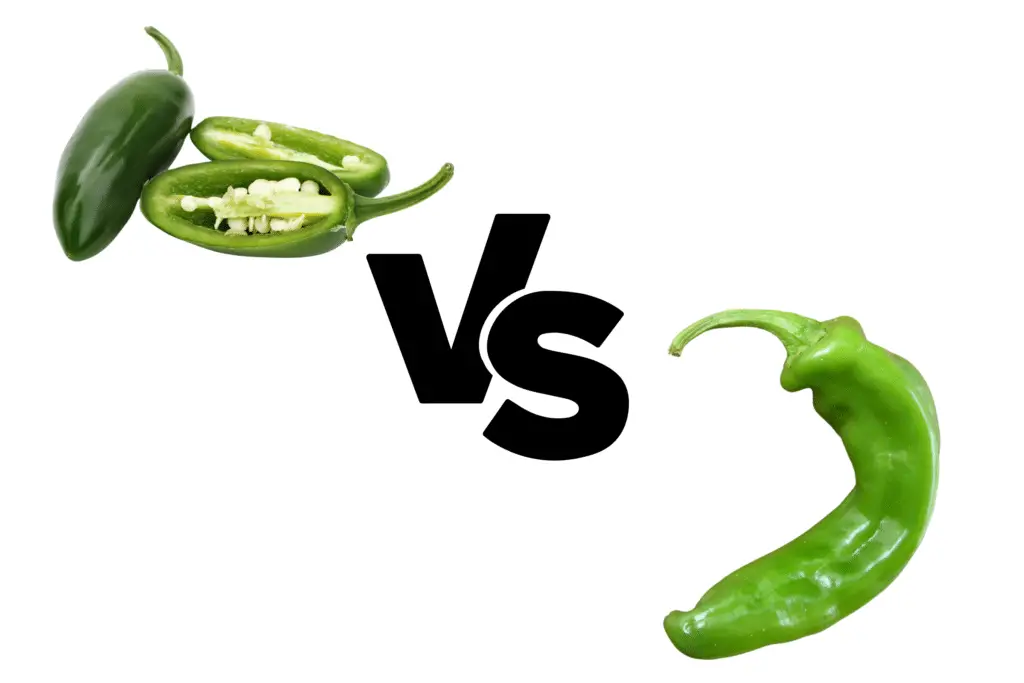
Just in case you don’t have both in your kitchen, let’s take a look at how they stack up to each other based on the following criteria:
- Jalepeño peppers vs Anaheim peppers heat level
- Jalepeño peppers vs Anaheim peppers flavor
- Jalepeño peppers vs Anaheim peppers texture
- Jalepeño peppers vs Anaheim peppers size and shape
- Jalepeño peppers vs Anaheim peppers nutrition
- Jalepeño peppers vs Anaheim peppers cost and availability
- Unique difficulties
- Substitutions
| Criteria | Jalepeño Pepper | Anaheim Pepper |
|---|---|---|
| Heat level | 2,000-8,000 SHU | 1,000-5,000 SHU |
| Flavor | Sweet and bright | Sweet and smoky |
| Texture | Smooth with a tough skin | Slight wrinkly |
| Size | 2-3″ | 4-6″ |
| Shape | Rounded cones | Long and slender |
| Nutrition (per 100g) | 29 Calories 144% DV Vitamin C | 20 Calories 292% DV Vitamin C |
| Substitutions | Serrano pepper | Green bell pepper |
Jalepeño peppers vs Anaheim peppers heat level (in Scoville heat units)
Jalepeños have an SHU range from 2,000-8,000.
Meanwhile, Anaheim peppers range from 1,000-5,000 SHU.
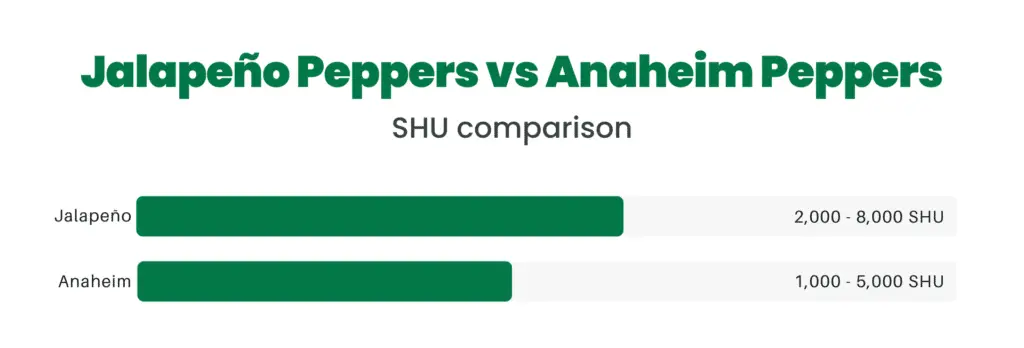
Because of the overlapping heat range, you can end up with a jalepeño 8 times as spicy as an Anaheim, or an Anaheim that is more than twice as spicy as a jalapeño. It all depends on how the cookie crumbles!
Jalepeño peppers vs Anaheim peppers flavor
Jalapeños are distinctly sweet and spicy.
Anaheims share jalapeño peppers’ sweetness but have an additional smokey layer to their flavor.
Jalepeño peppers vs Anaheim peppers texture
Jalapeños are smooth, while Anaheim peppers have some slight wrinkles.
Jalepeño peppers vs Anaheim peppers size and shape
Jalapeños and Anaheim peppers have a similar cone shape, but Anaheim peppers are much longer.
Jalepeño peppers vs Anaheim peppers nutrition
Both jalapeños and Anaheim peppers are low in calories, high in Vitamin C, and contain capsaicin.
Vitamin C fights free radicals in your body. Meanwhile, capsaicin potentially has anti-inflammatory actions.
Jalapeño peppers vs Anaheim peppers cost and availability
Jalapeños are available at most grocery stores, while you may struggle to find an Anaheim pepper at your local store.
Jalapeños cost less than Anaheim peppers because they’re easier to find.
Unique difficulties
A difficulty that both jalapenos and Anaheim peppers share is their large SHU range. It can be hard to know how spicy your pepper is going to end up being!
Can you substitute jalapeño peppers for Anaheim peppers or vice versa?
You can substitute jalapeño peppers for Anaheim peppers and vice versa, however, they are not necessarily each other’s best replacement.
They both have a sweet quality to them and similar SHU ratings.
Jalapeño peppers – a complete overview
Jalapeños are one of the most popular peppers and chances are good you’ve had one, but do you know everything about this slightly sweet pepper pod? You will soon!
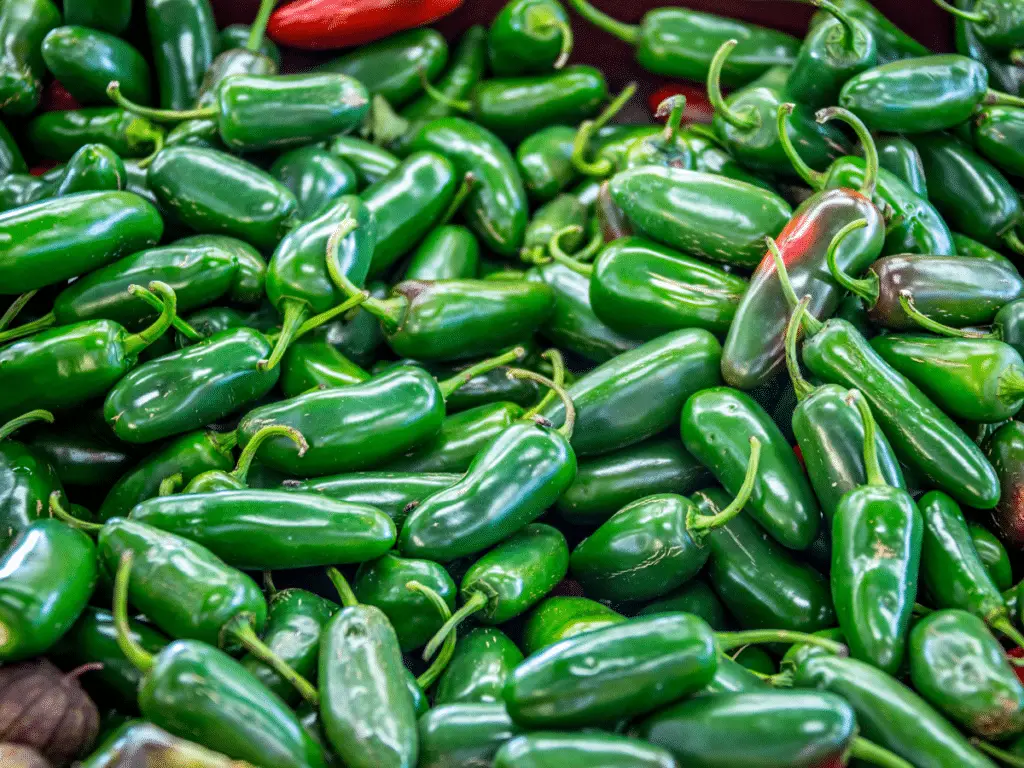
Let’s take a deep dive into the fan-favorite jalapeño pepper!
Heat
Jalapeños have a Scoville Heat rating that ranges from 2,000 to 8,000 SHU. That means some jalapeños are 4 times as spicy as others!

The redder the pepper, the hotter it is. This is due to the fact that capsaicin – the compound that makes peppers spicy – increases as peppers mature.
Size doesn’t say much regarding the heat of jalapeños. Your best bet is to go off of color- or grow them yourself!
Flavor
Jalapeños are enjoyably sweet and spicy.
Size, shape, and texture
Jalapeños are relatively small, measuring 2-3 inches long.
They have a rounded cone shape and a juicy punch!
Wondering how jalapeños compare to poblanos? Check out this article for a direct comparison!
Nutritional content and potential health benefits
Health benefits of jalapeño peppers include:
- Potential weight loss aid
- May help with ulcer prevention
- May battle infection
- May help heart health
- 26 calories
- 10% DV dietary fiber
- 20% DV Vitamin B6
- 177% DV Vitamin C
Cooking with jalapeño peppers
Jalapeño peppers are popular in Mexican recipes, but have been adopted in cuisines all around the world.
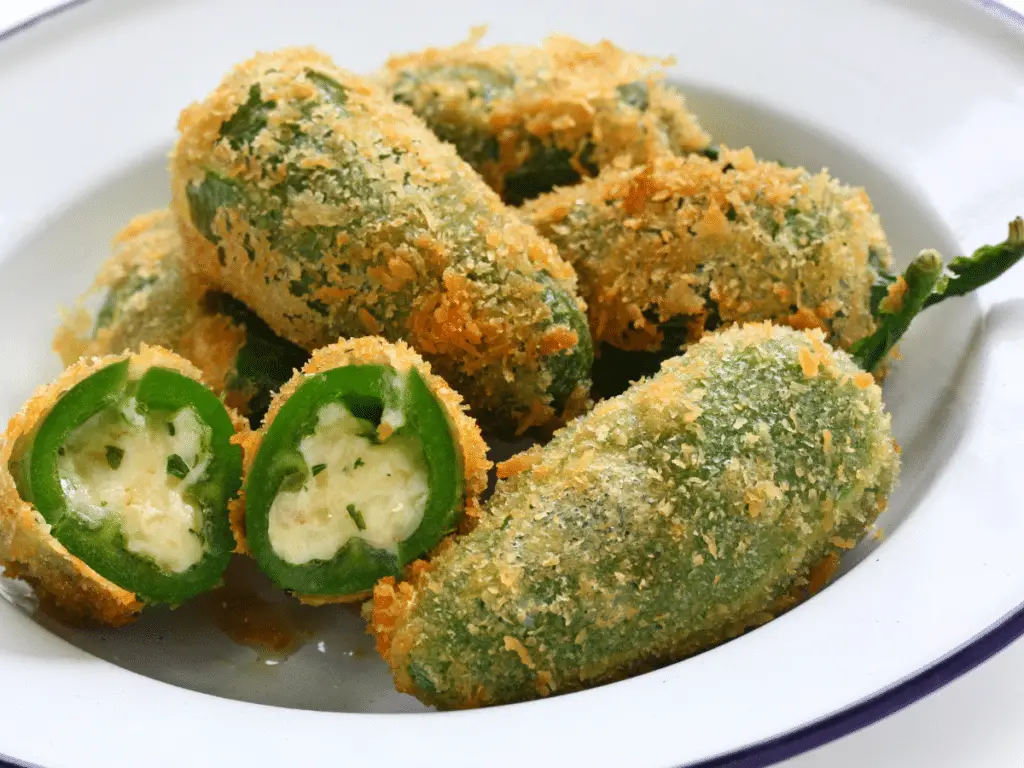
Jalapeños are a go-to for most medium salsa recipes (I like this one!), but you’re missing out if you’ve never tried a homemade jalapeño popper.
Substitutions for jalapeño peppers
Serrano peppers are a good substitute for jalapeños. A mild serrano has 10,000 SHU – making it a bit hotter than a spicy jalapeño.
Jalapeños and serranos both have a comparable sweetness and a decent kick to them.
Of course, you can also use an Anaheim pepper in place of a jalapeño. The heat level will be similar (or even slightly lower) although you’ll also find a slight smoky flavor as well.
Freezing, drying, and preserving jalapeño peppers
Many people love to eat pickled jalapeños. They’re great to put on top of nachos or subs. If you’re a fan, why not pickle them yourself?
You can also freeze, dry, or can them. Dried jalapeños can even be ground up and turned into chili powder!
Anaheim peppers – a complete overview
Anaheim peppers are named for the city in California where they were planted in the early 1900s, but they’re so common in New Mexico that they’re simply referred to as chiles there. It’s worth noting that the California variety of this pepper isn’t as hot as the ones grown in New Mexico.
Let’s take a look at this lesser-known pepper!
Heat
Anaheim peppers range from 1,000-5,000 SHU.

They mature from green into a deep maroon – giving you a helpful clue as to how hot the pepper is! Green Anaheim peppers have much less heat than the mature version.
Flavor
Anaheim peppers have an interesting, well-rounded flavor, being both sweet and deep at the same time.
Size, shape, and texture
Anaheim peppers can grow to be up to 10 inches long!
They look a bit like slightly wrinkly, elongated jalapeños.
Nutritional content and potential health benefits
Each Anaheim pepper has 13 calories and 86% DV Vitamin C.
Vitamin C is a powerful antioxidant that battles free radicals in your body, leading to potential cancer-preventing properties.
Likewise, capsaicin might be anti-inflammatory. It’s commonly used to fight inflammation topically and is being researched for internal benefits.
Cooking with Anaheim peppers
You’re most likely to find stuffed Anaheim peppers, but you can still grill, saute, blister, or roast them.
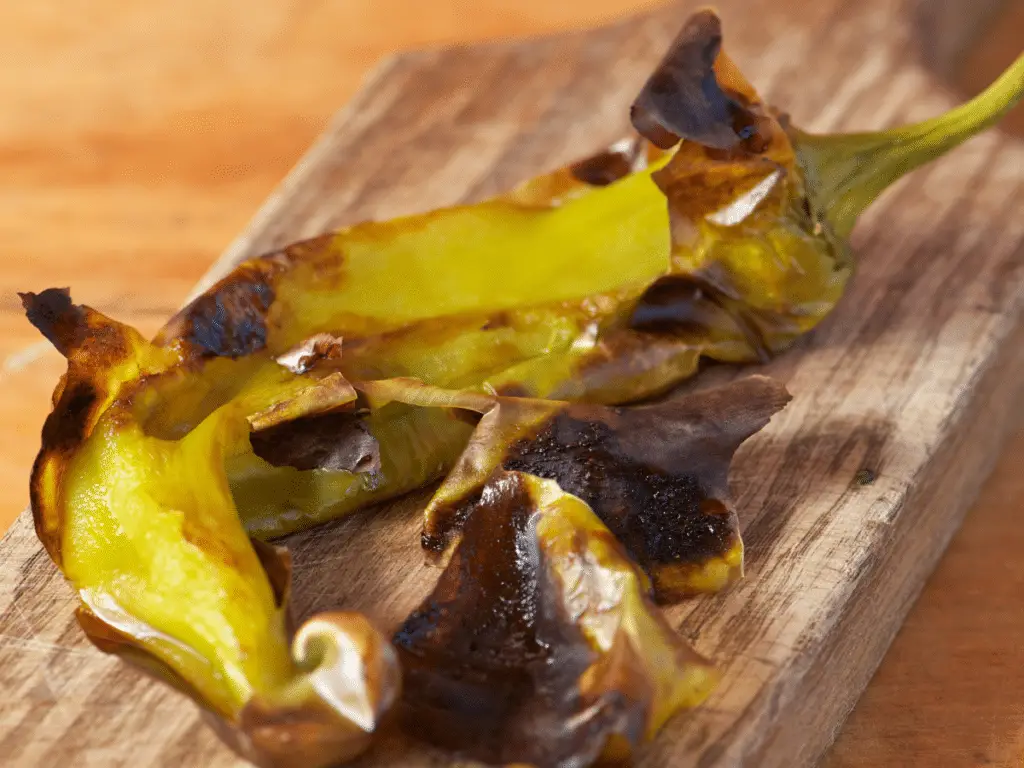
Using an Anaheim pepper in your cooking will bring a little bit of heat as well as a great depth of flavor.
Substitutions for Anaheim peppers
Poblano peppers are the best substitute for Anaheim peppers in terms of their rich smokiness. On the other hand, jalapeños are a good substitute if you’re targeting their heat and sweet flavor.
Freezing, drying, and preserving Anaheim peppers
Common ways to preserve Anaheim peppers include freezing, drying, pickling, and canning them.
Just like jalapeños, people like to grind up their dried Anaheim peppers and make chili powder!

